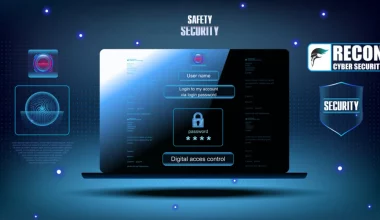Reality always asserts itself—regardless of any personal or commercial choices you make, good or bad. Just recently, the city services in Antwerp Belgium were victims of a highly disruptive cyberattack. As usual, everyone cries foul play and suggests they should’ve had stronger cybersecurity measures in place. But that just means they’re being reactive rather than proactive; no matter what security measure you put into place once an attack hits, it’s already too late when you react to it instead of stopping it before it even starts. In modern days, Cyber security plays an important role to protect ourselves from cyber frauds, unknown access etc.
In reality (no pun intended), there isn’t anything special or unique about this attack; nor is this the last one out there. Why are we so happy to whistle past the graveyard and move along as if nothing ever happened? Is everyone’s disaster recovery plan that strong? Have all their security measures been implemented – and tested for vulnerabilities?
Let’s take a look back at what you can do in Cyber Security to protect
To keep your company safe online, start by ensuring that everyone is aware of basic safety precautions. All employees should have a strong knowledge base when it comes to password hygiene, limitations on account sharing, and guidelines for staying safe online. Business owners can also perform audits of their existing equipment – after all, you can’t protect anything if you don’t even know where it is! When creating networks for an office environment, try implementing segmentation techniques for both servers and laptops. If one computer doesn’t need access to another computer or file system within the office, they should not be able to communicate through the same switch/router connection – this goes for both remote connections via VPNs (Virtual Private Networks) as well as other types of web traffic such as email.
Locking down your ports and restricting Wi-Fi accessibility to only registered devices ensures that no one who doesn’t belong can insert their device onto the network without supervision. This may frustrate some users, but it is worth the compromise if it makes security a priority.

Keeping your servers patched matters
First off, we’ll talk about servers. The most important piece of advice is to constantly update them with patches. This goes for exposed public-facing servers – such as web servers – but also for the server in the closet that’s been overlooked for way too long now. It doesn’t take much time or effort at all to keep these up-to-date and this will save you from having to deal with any sort of major breakdown at any moment. Hackers are sneaky bastards; they’re always looking for a way in so it pays off big time if you don’t give them an opening. With live patching, there’s never a bad situation when it comes to vulnerabilities because nothing is stopping you from fixing anything that comes along your way!
Take an Active Approach
If a server no longer has a purpose, either delete it or destroy the instance. It doesn’t matter whether you’re talking about containers, VMs, instances, or nodes – these types of servers all require you to react ASAP. Remember that mistakes can happen when they aren’t looked after diligently. For example: if you don’t do anything and an unauthorized individual takes control of your computer using malware–the consequences could be dire. Sure there are other factors to take into consideration, but ideally, with proactive cybersecurity strategies in place, all problems will be prevented before they arise. Employ vulnerability management tools to make sure everything is kept secure before anything bad happens. Take full precautionary measures – have contingency plans at the ready in case something unforeseen happens; maybe even start from first base (i.e., what would happen if nothing was working tomorrow). Be mindful of how important various data resources such as hardware and networks are; never forget those things either!
Most importantly, act now without delay.
If you have trouble answering any of the questions above, it means that there is work to do – and this should not be delayed. As an organization, you don’t want to find yourself in a situation where your systems go down; customers switch to one of your competitors, and your boss demands answers – but all you’re able to offer him or her is a blank stare and fearfully shaking hands. However, these things can be avoided. All of the questions we discussed earlier can be answered through due diligence and attentiveness ahead of time; furthermore, the practices mentioned previously (while being just a mere taste of what needs to happen) are good starting points for those looking for solutions. Whether you’ve already investigated them or not…well, now would be the best time to start doing so – before anything happens.
This post was sponsored by TuxCare, the most trusted name in enterprise-grade Linux automation today. Their package features unmatched levels of efficiency for developers, IT security managers, and Linux server admins looking to quickly bolster their cybersecurity operation at an affordable price point. Whether it’s through Linux kernel live patching or standard/enhanced customer service plans – they’ve got you covered with everything from preconfigured servers to cover all needs!






